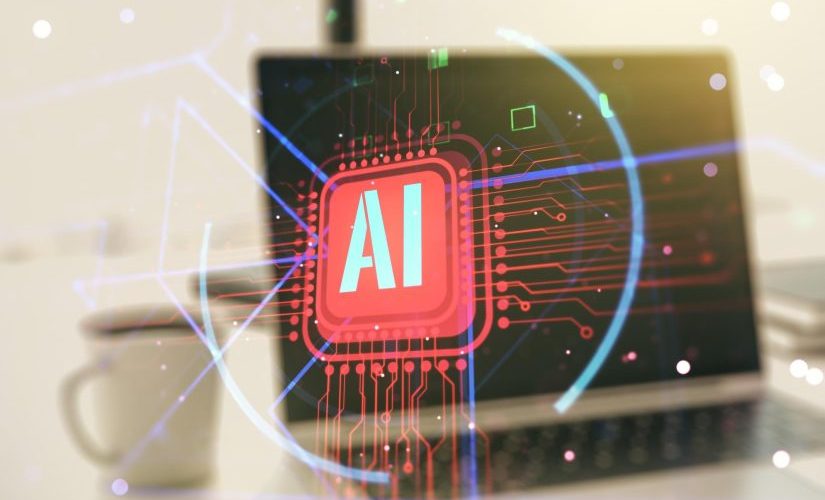Organizations increasingly turn to AI-powered testing solutions to streamline their quality assurance processes and improve software reliability. As this reliance on AI grows, a fundamental question emerges: when can such testing methodologies be confidently trusted? The effectiveness and reliability of AI-driven testing hinge on a complex interplay of factors that demands a closer examination.
This article delves into the nuanced nature of AI assistance in software testing, deciphering the conditions and considerations establishing trust in this next-gen approach to quality assurance.
How AI Facilitates Software Testing
AI has brought transformative advancements to various domains, and software testing is no exception. By leveraging AI capabilities, software testing processes have become more speedy, accurate, and comprehensive. Let’s overview ten major use cases of AI in software testing:
- Automated Test Case Generation: AI algorithms analyze requirements and code to generate test cases automatically. This ensures broader test coverage and reduces the manual effort required to create test scenarios.
- Defect Prediction and Analysis: AI can analyze historical data, code patterns, and bug reports to predict potential defects. Testers can then focus on critical areas and prioritize their efforts accordingly.
- Anomaly Detection: AI-powered tools can detect abnormal behavior during testing, helping identify potential defects that might go unnoticed through traditional methods. This proactive approach enhances defect identification.
- Automated Test Execution: AI-driven testing tools excel in executing a large volume of test cases across diverse configurations and environments. This not only saves time but also improves testing accuracy.
- Log Analysis and Bug Detection: AI algorithms can analyze log files and error reports to identify patterns associated with bugs. This accelerates bug detection and resolution by pinpointing relevant information.
- Test Environment Management: AI can dynamically set up, configure, and manage test environments. This reduces the overhead of environment setup, allowing testers to focus more on actual testing.
- Automated Bug Triage: AI can categorize and prioritize incoming bug reports based on historical data and severity. It then assigns these reports to the appropriate developers or teams, expediting bug resolution.
- Performance Testing: AI can simulate real-world user loads to identify performance bottlenecks and stress points in an application. This aids in optimizing performance before deployment.
- Usability Testing: Through simulated user interactions, AI identifies usability issues and suggests improvements to enhance the overall user experience. This ensures that the software meets user expectations.
- Regression Testing Automation: AI automates the process of running regression tests when new code is added. By quickly identifying any regressions, this approach ensures that new changes do not disrupt existing functionality.
As we can see, integrating AI in software testing offers multiple benefits. It accelerates testing cycles, enhances accuracy and test coverage, and reduces human error and effort, thereby allowing testers to focus on more complex, high-level tasks. Besides, AI can perform testing tasks round the clock, enabling continuous testing and faster feedback on code changes without human intervention. And that’s not an excessive list of perks that AI brings to the software development process.
However, integrating AI into existing testing workflows requires expertise and careful consideration of the specific tools and techniques that align with the project’s goals and needs. Besides, implementing AI in software testing can be risky due to potential algorithm biases, data quality, ethical considerations, and the complexity of software behavior. Further, we will consider these risks in more detail.
Potential Risks AI Poses to Software Testing Outcomes
As AI becomes increasingly integrated into the software testing process, it is vital to recognize the potential risks and threats that come hand-in-hand with innovations. From biases entrenched in AI algorithms to concerns about data privacy and explainability issues, this section delves into significant risks that accompany the implementation of AI-driven testing. By exploring these pitfalls, we can navigate the intricate balance between harnessing AI’s power and ensuring a responsible, ethical, and secure testing approach.
Bias in Test Case Generation
AI systems learn from historical data, and if that data contains biases, the AI model can perpetuate and amplify those biases. AI-driven test case generation can inadvertently introduce biases into the testing process. For instance, if an AI algorithm is trained predominantly on positive test cases, it might overlook critical negative scenarios. This can lead to incomplete test coverage and diminish the effectiveness of testing efforts. To avoid that, employ diverse training data that covers a wide range of user demographics and behaviors. Implement bias detection and mitigation techniques during both the training and testing phases. Incorporate human oversight and regularly review the AI model to ensure ongoing fairness.
Limited Human Understanding
Complex AI algorithms can generate test cases that are difficult for humans to comprehend. The lack of transparency in the decision-making process of AI-generated test cases can hinder developers’ ability to understand the tests, diagnose issues, and make informed decisions for improvements. To cope with that, prioritize human expertise in reviewing and validating AI-generated tests to ensure they align with QA engineers’ understanding of the system’s behavior. You can also develop visualization tools that simplify complex scenarios for human understanding and conduct regular knowledge-sharing sessions between AI and testing teams to bridge the gap.
Data Privacy and Security
AI testing requires access to substantial amounts of data, which can raise concerns about data privacy and security breaches if the data is not properly handled, stored, and anonymized. Implementing strong, all-round security measures for sensitive data used in AI testing is the key as well as regular audit and monitoring data handling practices.
False Positives and Negatives
AI-driven testing tools can sometimes generate false positives (indicating problems that don’t exist) or false negatives (missing actual issues). False positives can lead to wasted time and effort investigating non-existent problems, while false negatives can result in crucial defects escaping detection. By conducting comprehensive validation of AI-generated results, and integrating human expertise to review and confirm test outcomes, this risk can be minimized.
Overemphasis on Automation
An overreliance on AI-driven testing might lead to a decreased emphasis on human intuition, creativity, and domain knowledge. This could result in missing exploratory testing that human testers excel at. Counter overemphasis on automation by maintaining a balanced approach. Incorporate exploratory testing, encourage human testers to provide domain expertise, and ensure that AI complements human intuition rather than replacing it completely.
Dependency on Training Data
If the training data used to train AI models is limited or doesn’t encompass a wide range of scenarios, the AI might struggle to generalize effectively to real-world situations. The risk is particularly relevant when dealing with rare or novel events that are underrepresented in the training data. This can lead to poor performance when faced with inputs or situations that differ from the training data, resulting in suboptimal outcomes and reduced reliability of the AI system. QA engineers should ensure diverse and comprehensive training data that covers a wide spectrum of possible inputs, regularly update the training data, implement data augmentation and synthetic data generation techniques to fill gaps. Additionally, incorporate techniques such as transfer learning for AI to leverage knowledge from related domains and enhance its performance in new contexts.
Ethical Considerations
AI decisions can have ethical implications, especially in areas where human judgment, empathy, and contextual understanding are critical. If AI is solely responsible for test case generation, it could overlook certain user perspectives, leading to products that cater only to specific demographics or user behaviors. Address ethical considerations by setting clear ethical guidelines, conducting thorough ethical reviews, and continuously monitoring AI behavior for potential biases or unintended consequences.
Skill Gap
The demand for specialized expertise in AI techniques and technologies exceeds the available supply of skilled professionals. This can lead to challenges in effectively implementing and maintaining AI systems, resulting in suboptimal outcomes, increased costs, and delayed projects. Bridging the skill gap requires investments in training and upskilling to ensure that testing teams possess the necessary knowledge to leverage AI effectively.
Balancing AI’s strengths with human expertise is key to navigating the challenges successfully and reap the benefits of AI-powered software testing. By embracing transparency, rigorous validation, and continuous monitoring, we can harness AI’s capabilities while minimizing its pitfalls and ensure that our pursuit of innovation remains steadfast and secure.
Under What Conditions AI-Powered Software Testing Can Be Trusted?
Credible AI testing approaches inspire confidence in developers, testers, and stakeholders, enabling informed decision-making and efficient bug resolution. Ensuring the reliability, accuracy, and ethical soundness of AI in software testing demands a thorough exploration of the prerequisites that establish a foundation of trust. Here are fundamental criteria that trustworthy AI-powered software should meet.
Validation and Verification. AI testing tools must undergo rigorous validation and verification to establish their accuracy and effectiveness. Extensive testing against known benchmarks and real-world scenarios helps ensure the AI reliably detects bugs, vulnerabilities, and performance issues.
Transparent Decision-Making. Trust in AI-powered testing relies on transparency. Developers and testers should be able to understand how the AI arrives at its decisions and recommendations. Explainable AI techniques, such as model interpretability methods, provide insights into the factors influencing AI-generated test cases and results.
Ethical Guidelines. AI testing tools must adhere to ethical guidelines to avoid biases, discrimination, and unfairness. Developers should be cautious about the training data used, ensuring it is diverse and representative. Regular monitoring and audits should be conducted to identify and rectify any potential ethical concerns.
Human Oversight and Expertise. While AI can enhance testing, human expertise is crucial for ensuring the relevance and accuracy of the generated test cases. Human testers should collaborate with AI systems to validate results, confirm the significance of detected issues, and provide domain-specific insights that AI might miss.
Continuous Learning and Adaptation. AI models used for testing should continuously learn and adapt. This involves updating the models with new data and insights to account for changing software features, user behaviors, and emerging trends. Regular model updates prevent stagnation and ensure the AI remains effective and beneficial for software quality assurance and testing (lightpointgl0bal dotcom — software-testing).
Comprehensive Testing Approach. AI should complement existing testing methods, not replace them entirely. Trust is built when AI is integrated into a comprehensive testing strategy that includes manual testing, automated testing, and exploratory testing. This approach provides diverse perspectives and validates AI-generated results.
Validation in Real-world Scenarios. AI-generated tests should be validated in real-world scenarios to ensure they accurately reflect user interactions, system behaviors, and potential issues. This validation helps bridge the gap between controlled testing environments and real-world usage.
Data Privacy and Security Measures. AI-powered testing involves accessing and analyzing data. Trust is built when robust data privacy and security measures are in place to protect sensitive information. Strong encryption, anonymization, and access controls should be implemented to prevent data breaches.
Collaboration Between AI and Human Testers. Collaboration between AI experts and human testers is essential. Trust is fostered when AI developers and testers work together to fine-tune AI models, validate results, address issues, and refine testing strategies based on real-world feedback.
Validation against Historical Data. AI-powered testing should be validated against historical data from past software releases. This ensures that the AI can accurately detect known issues and vulnerabilities identified and addressed in earlier versions.
Thorough Testing of AI Models. AI models used in testing should themselves be thoroughly tested to identify any potential biases, weaknesses, or vulnerabilities. Rigorous testing and validation of AI models contribute to their reliability and accuracy.
Feedback Loop and Continuous Improvement. Trust is established when there is a feedback loop between developers and AI systems. Regular feedback from human testers and developers helps improve the accuracy of AI-generated test cases, addressing any issues that arise.
Organizations should be mindful of these conditions to ensure that AI-powered testing becomes an integral and reliable component of their full-cycle software development process. By adhering to these conditions, they can harness the benefits of AI while maintaining the highest standards of software quality.
Closing Remarks
As we unlock the power of AI, the careful assessment of its trustworthiness becomes not just a requirement but a cornerstone in our pursuit of software excellence. The collaboration between AI and human expertise, combined with comprehensive testing strategies, forms the bedrock of credibility. By adhering to rigorous validation, transparency, ethical considerations, and real-world validation, we can ensure that AI contributes to the advancement of software development while maintaining the highest standards of reliability and accuracy.
Featured Image Credit: Provided by the Author; Thank you!





